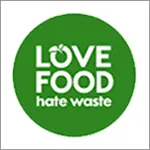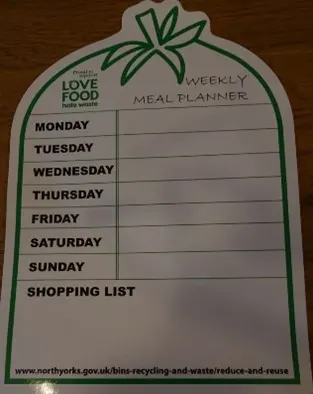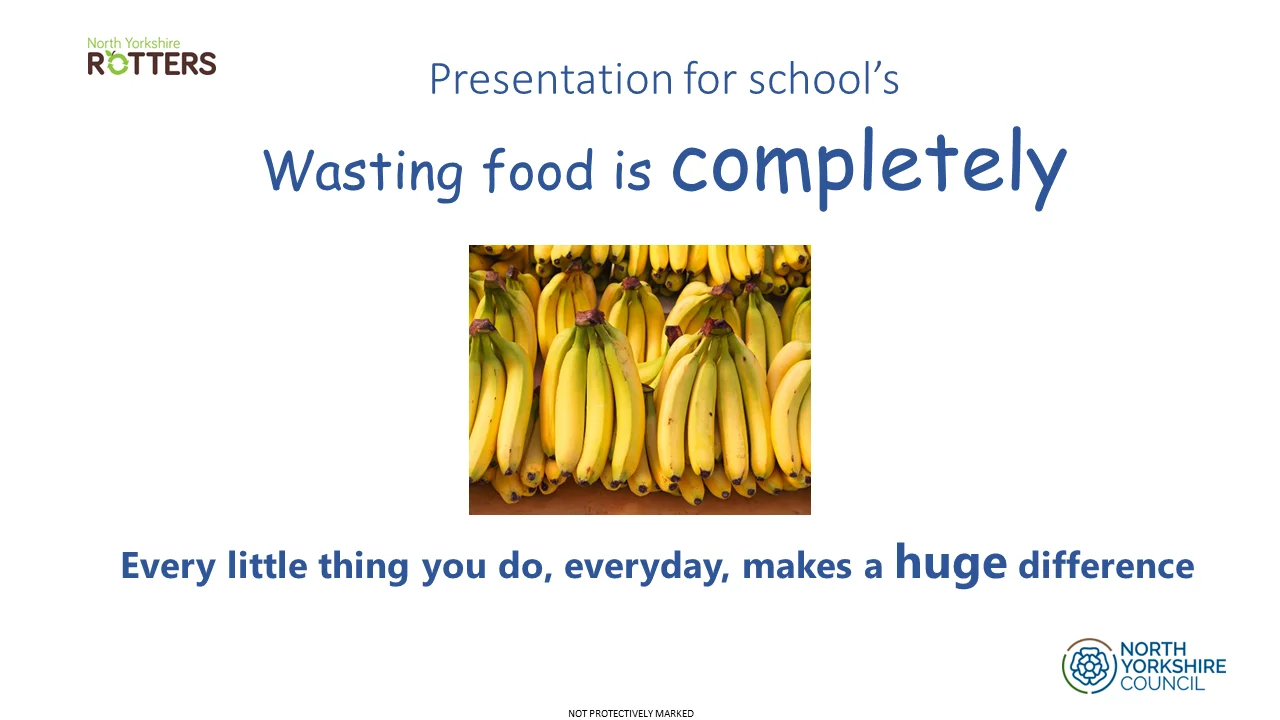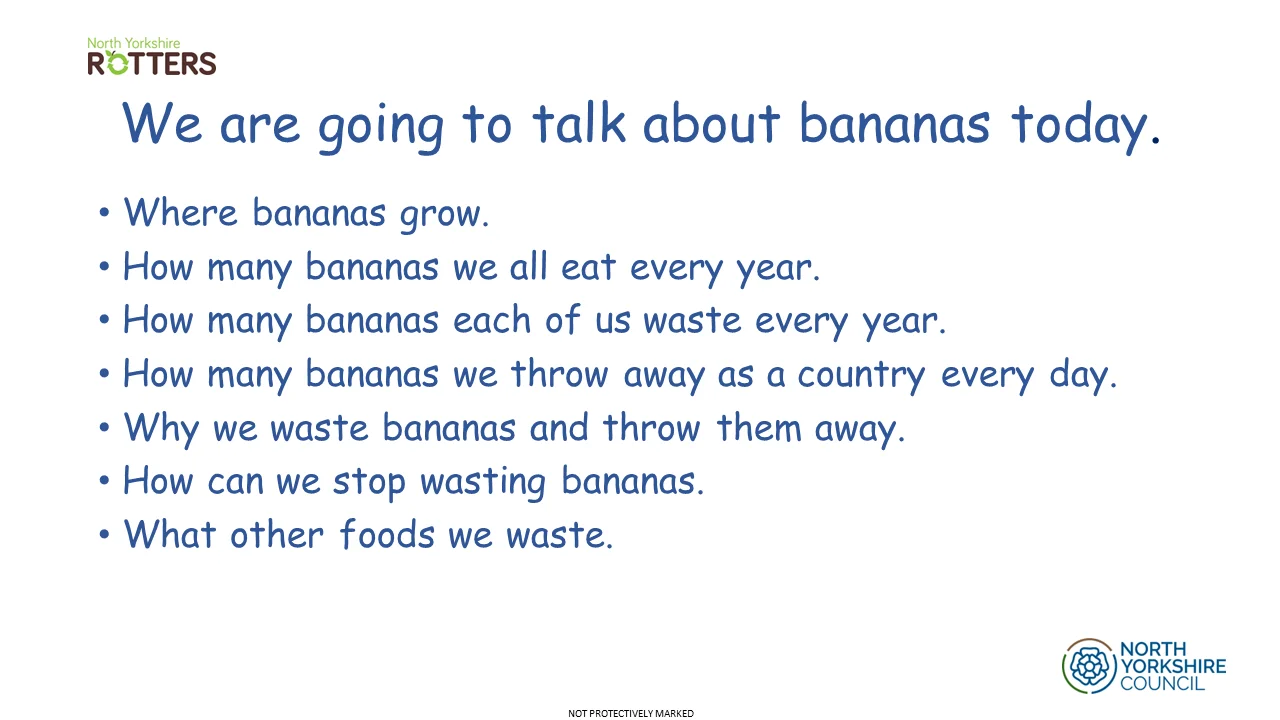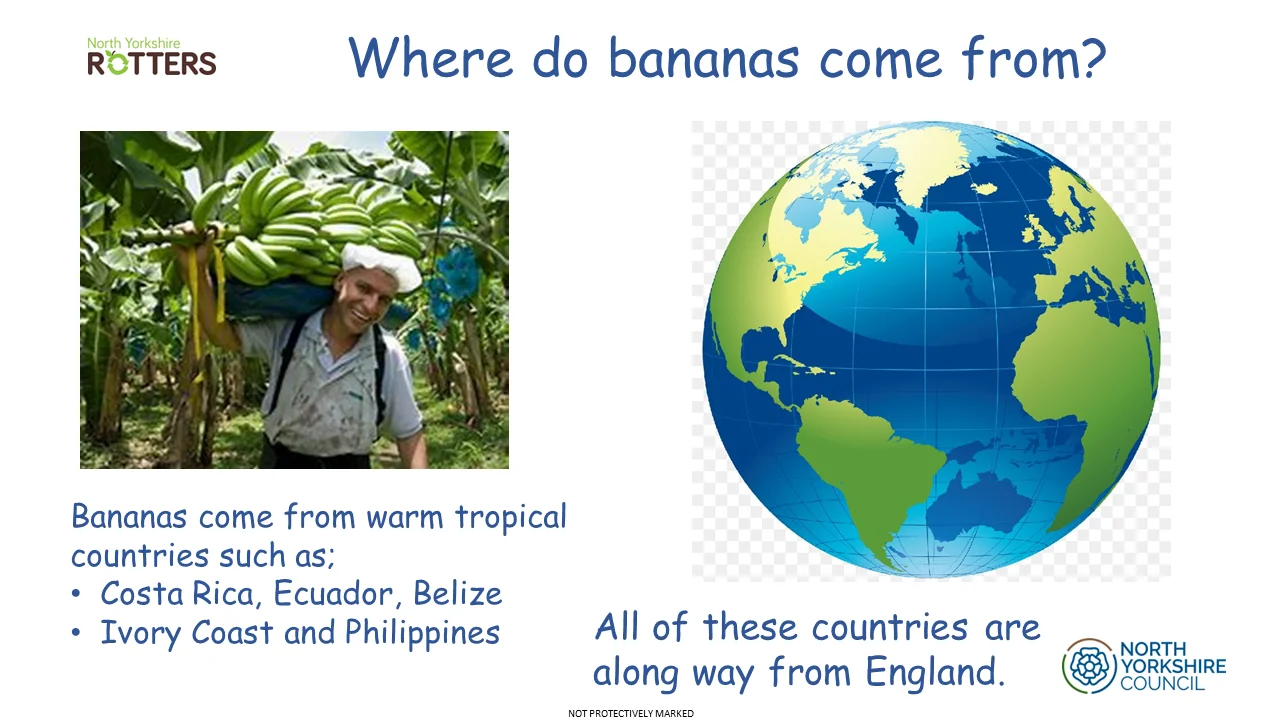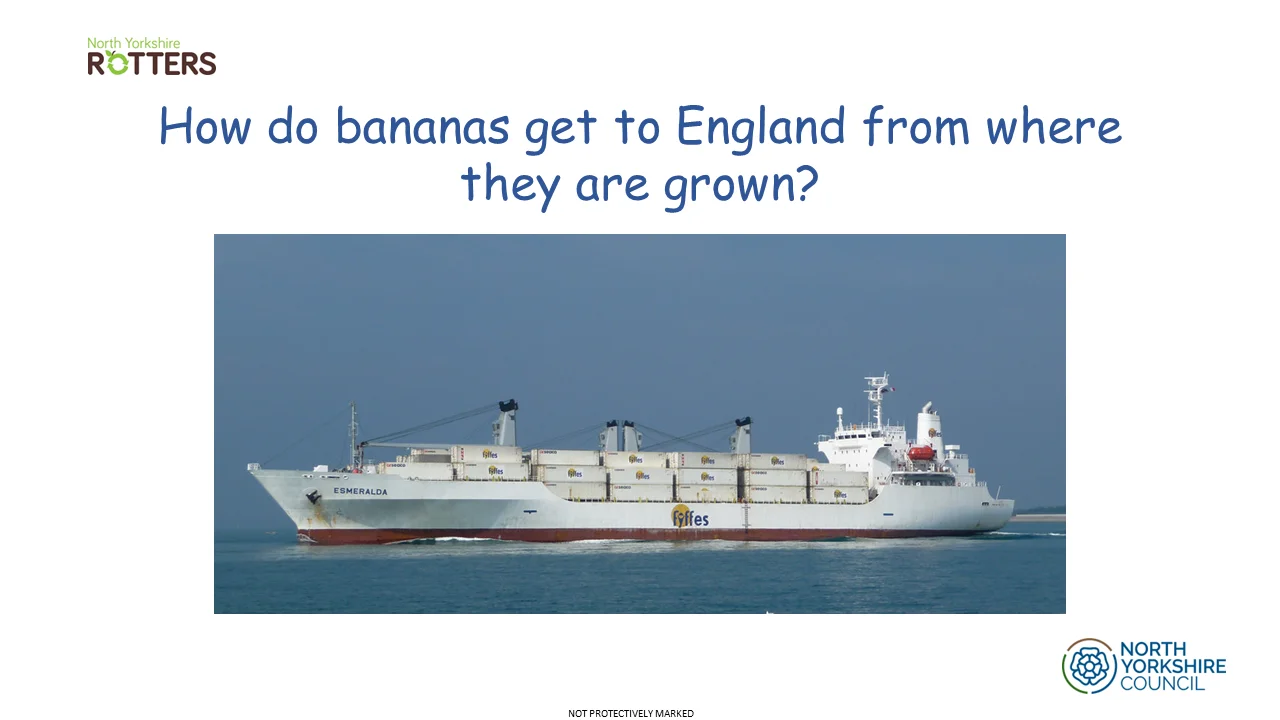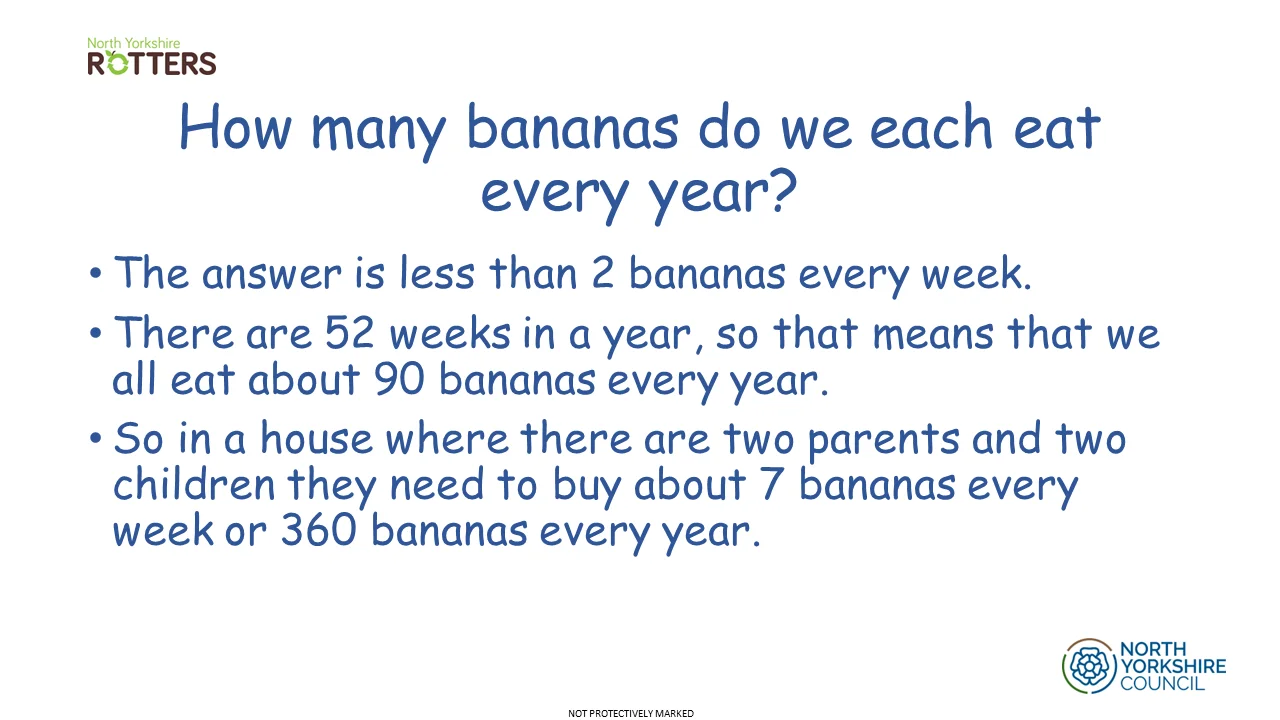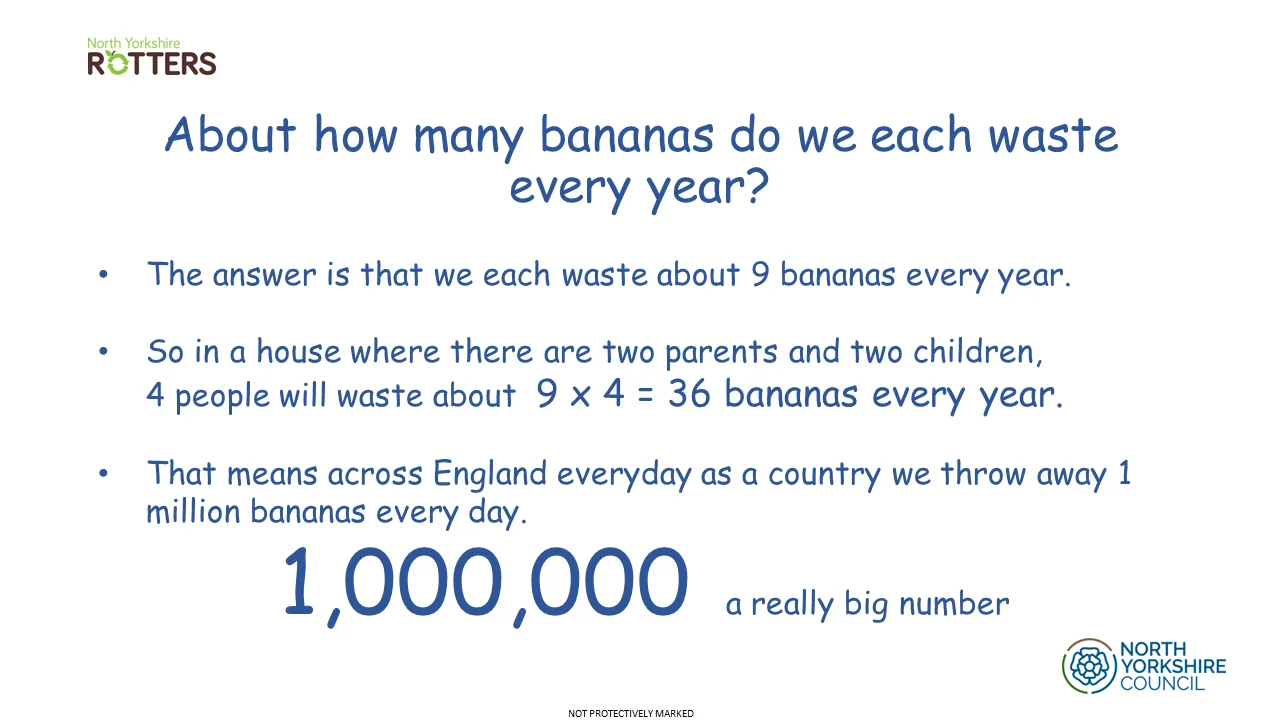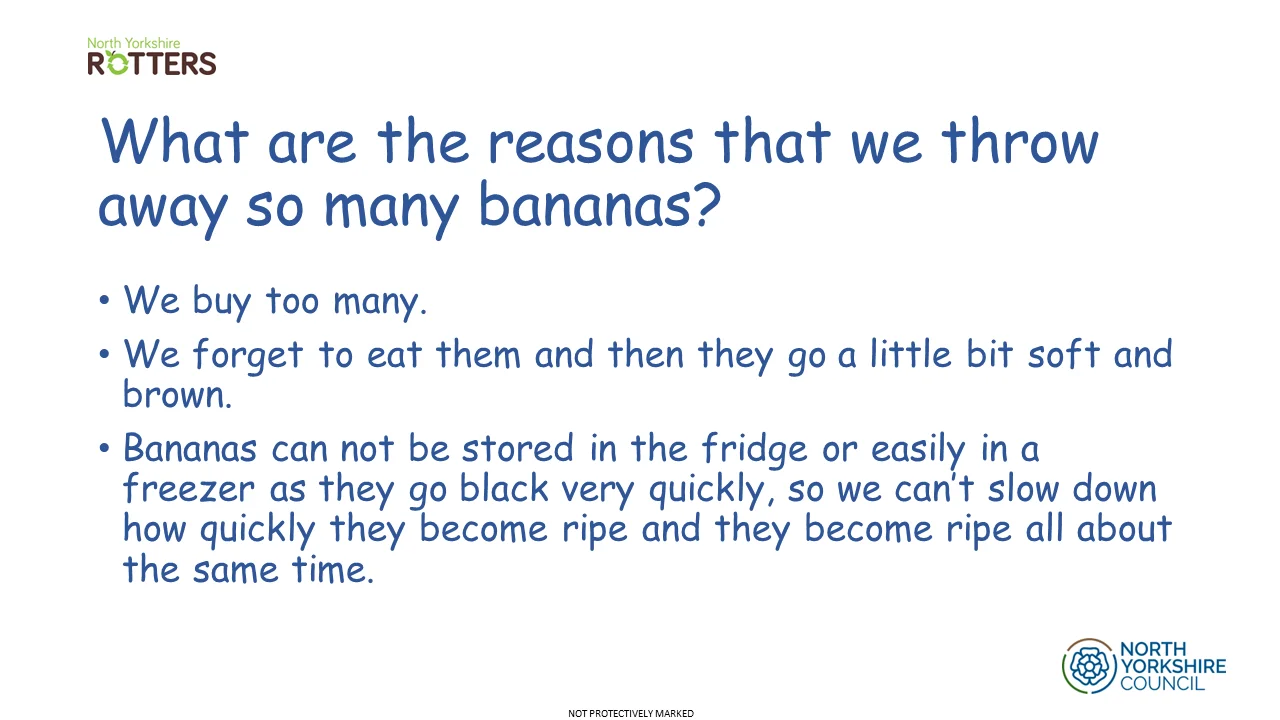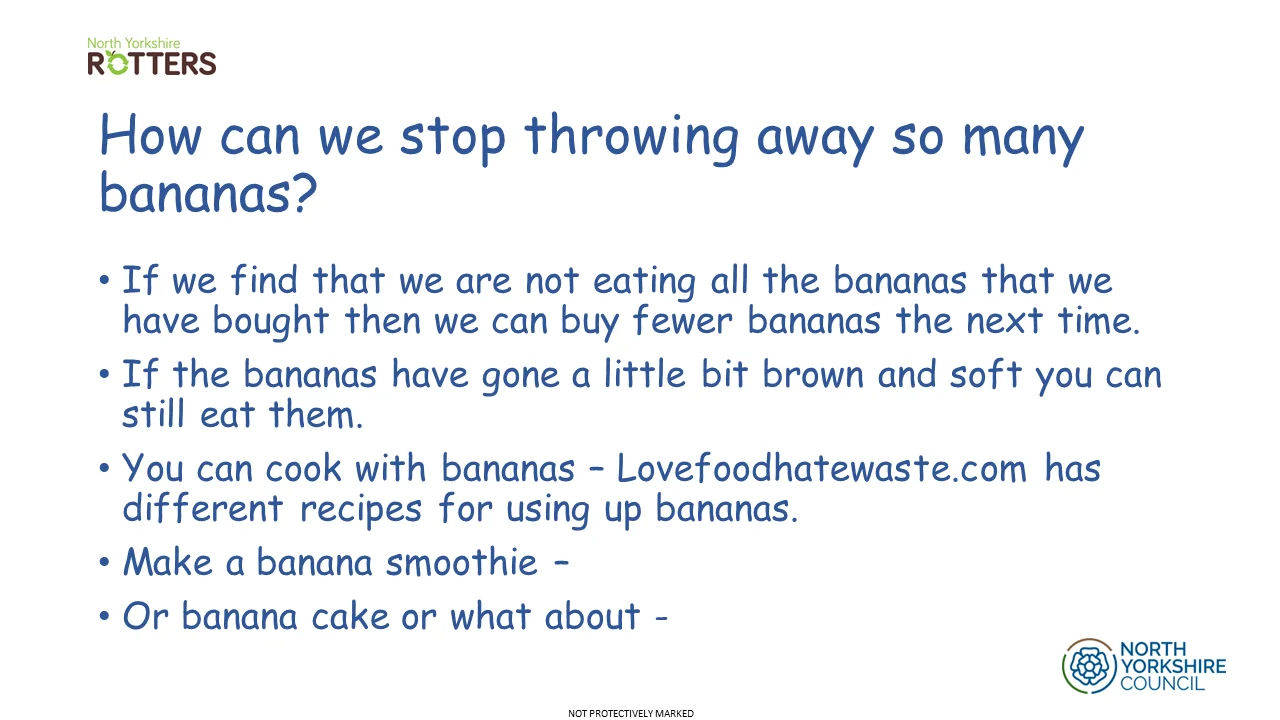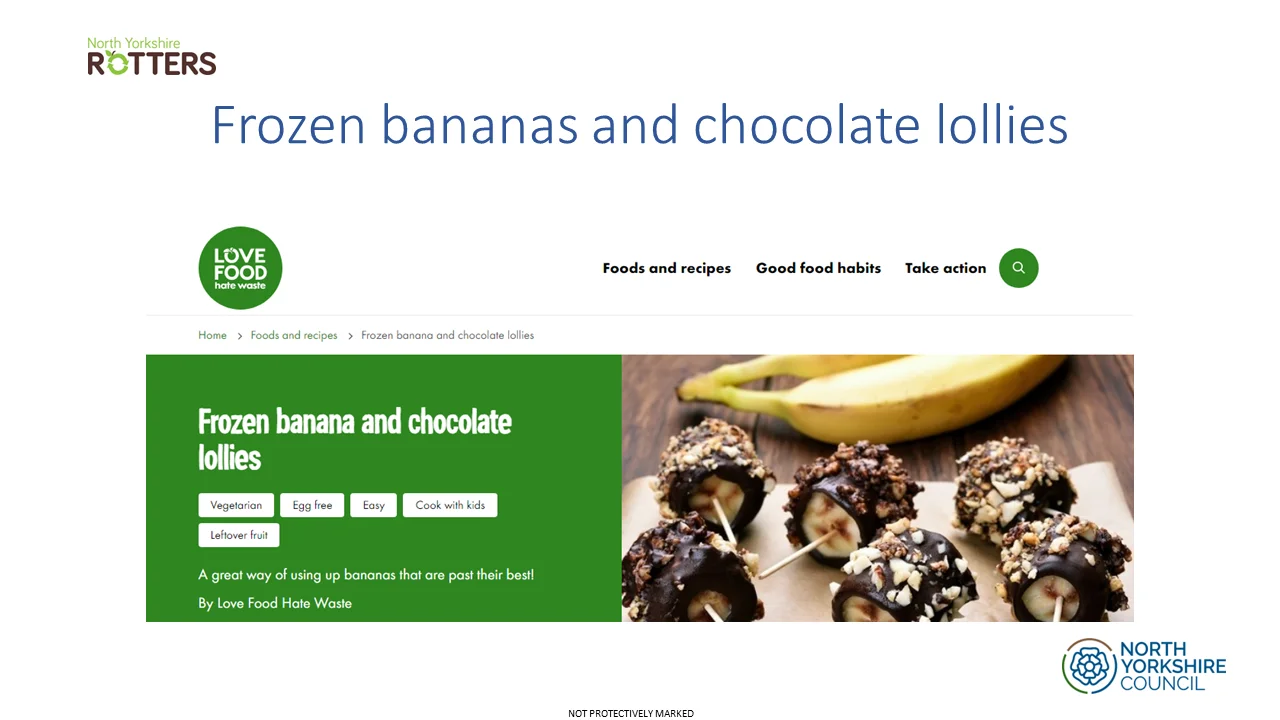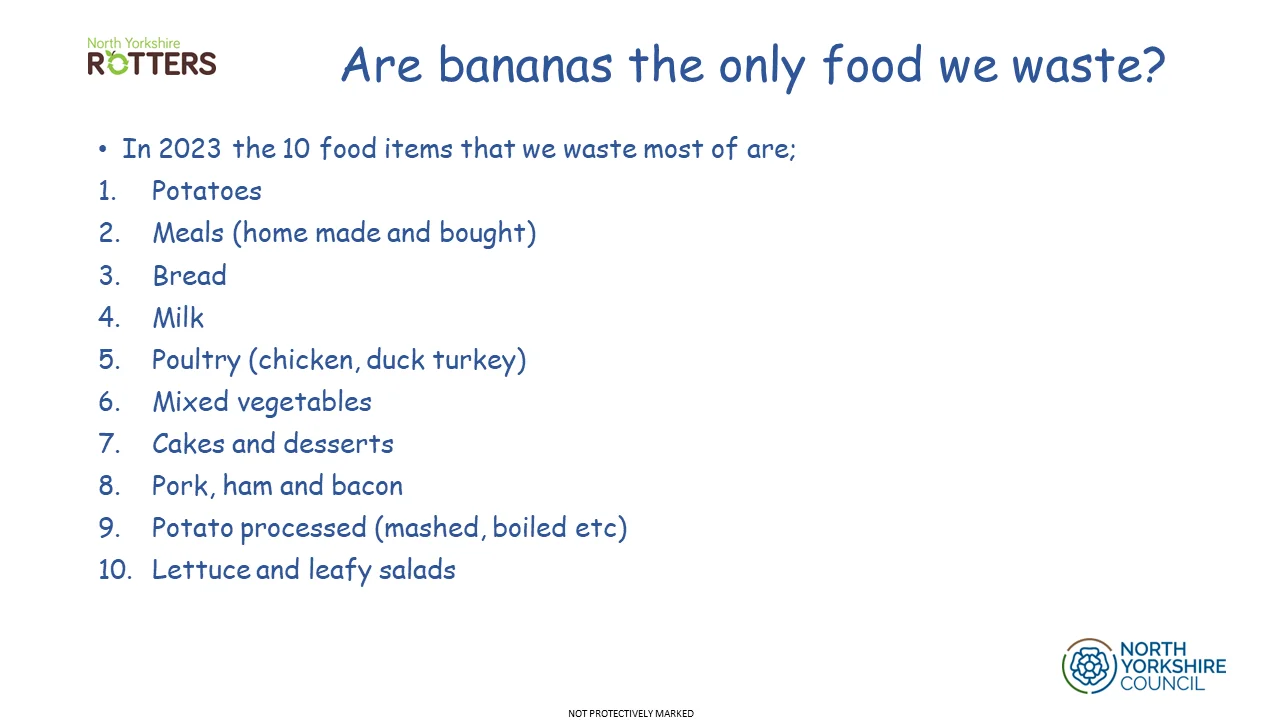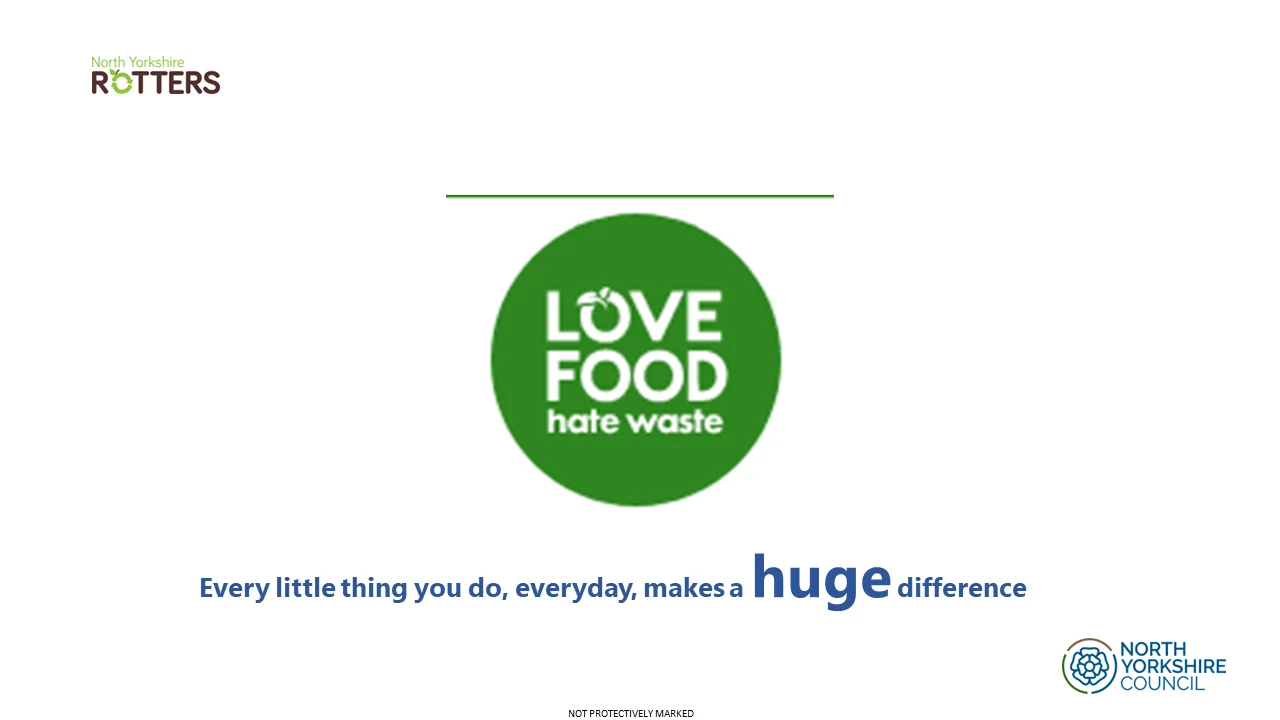Food Waste
Food waste has been identified as a key component of climate change and it is something that happens in every corner of the world, often for very different reasons. Here in the UK we have been addressing some of the issues around food waste since 2007 in a national project called LoveFoodHateWaste. The North Yorkshire Rotters have been supporting this campaign since its start.
Reducing the Green House Gas emissions associated with food production and food waste is fundamental to the World reaching Net Zero carbon emissions by 2050. Transitioning to carbon free energy will only get the planet half way to achieving Net Zero, reducing food waste is not just a good thing to do it is absolutely necessary.
The United Nations Sustainable Development Goal 12.3 seeks to reduce food waste, to reduce the amount of water used to cultivate crops and to reduce the level of Green House Gas emissions associated with growing our food and food waste by half by 2030. Many countries have adopted these targets and we are working hard to reach this target here in the UK.
The environmental charity WRAP (Waste and Resources Action Programme) has taken the lead in the UK’s Food Waste reduction campaign and operates the ‘LoveFoodHateWaste’ program both in the UK and in several other countries.
WRAP’s 2023 report – UK Food Waste & Food Surplus – Key Facts states that 73% of wasted food (excluding inedible parts) comes from households. The UK made good progress in reducing food waste from households from 2007 to 2018 however that trend reversed between 2018 and 2021.
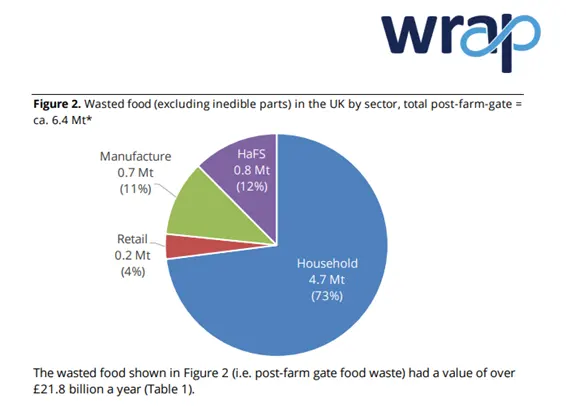
This poem has been created by North Yorkshire Rotters volunteer Fiona Kearns to inspire people to reduce food waste by giving top tips and raising awareness of the issues
The UK’s national food waste target weight is 45.5 kilograms per year per person, the table below shows the reduction in food waste annually, weekly and the cash savings available to different types of households.
|
|
1 person household |
2 persons household |
4 persons household |
|
|
Annual food waste reduction target by 2030 |
30 kg |
60 kg |
120 kg |
Kilograms per year |
|
Weekly food waste reduction target by 2030 |
577gms |
1154gms |
2307gms |
Grammes per week |
|
Annual cash savings available |
£88.00 |
£211.19 |
£351.99 |
£ per year savings |
By reducing ‘Food Waste’ you can save yourself money.
Throwing away food which could have been eaten is a bit like throwing money into the bin. Why wait until 2030 to start saving money, start making those savings now by taking the North Yorkshire Rotters;
Two-Week Food Waste Reduction Challenge
To take the North Yorkshire Rotters – Two week food waste reduction challenge follow the link on the home page. Below is a range information to help you get off to a flying start and to start reducing the amount of food waste that you make and start saving yourself some money as well.
LoveFoodHateWaste gives you 6 tips that will help you to reduce your food waste and provide information on some of our most wasted foods to get you off to a flying start.
Food Waste Reduction Diary gives you the tools.
The time to act on food waste is now
Every little thing you do, everyday, makes a huge difference.
LoveFoodHateWaste
6 Actions to reduce food waste
- Plan shopping and meals – Think before you shop. What do you really need – make a meals plan and shopping list alongside each other to avoid making spontaneous purchases which are a significant cause of food waste.
- Be Thrifty – use left overs
- Set your fridge to the right temperature
- Use the freezer for added food flexibility
- Portion sizes
- Use it or lose it
Top most wasted food and drink items in UK homes
|
1 |
Potatoes (Fresh) |
|
2 |
Meals (home-made and ready meals) |
|
3 |
Bread |
|
4 |
Milk |
|
5 |
Poultry (chicken, turkey and duck) |
|
6 |
Mixed Vegetables |
|
7 |
Cakes and desserts |
|
8 |
Pork, Ham and Bacon |
|
9 |
Potatoes (processed) |
|
10 |
Lettuce and leafy salads |
Top reasons for disposing of food
| Reason for throwing away food | Food waste million tonnes annually | % by weight | Value (£bn) |
| Not used in time | 1.8 | 39% | £6.6 |
| Personal preference | 1.1 | 22% | £3.2 |
| Cooked, prepared, served too much | 1.2 | 25% | £4.9 |
| Other | 0.6 | 13% | £2.3 |
| Total | 4.7 | 100% | £17 |
Reference: https://wrap.org.uk/resources/report/food-surplus-and-waste-uk-key-facts-updated-november-2023

